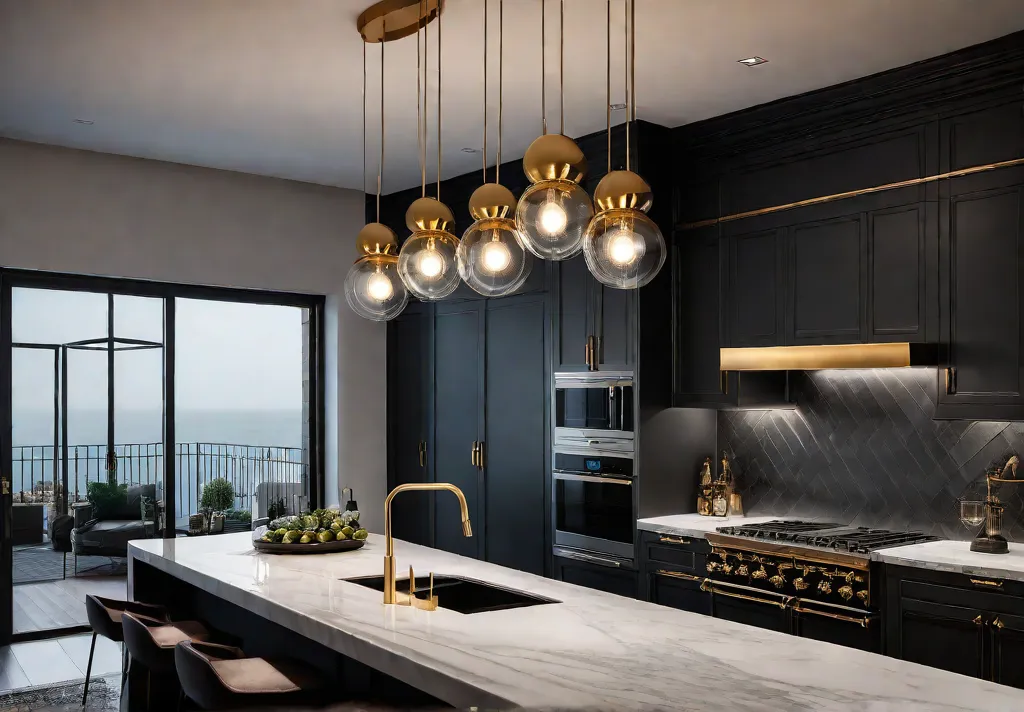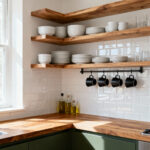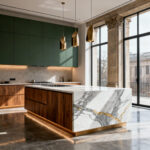Have you ever walked into a kitchen and felt like something was just… off? Maybe it was too dark and gloomy, or the lighting seemed haphazard and disjointed. I’ve been there! As an eco-conscious lifestyle blogger, I know firsthand how the right kitchen lighting can make all the difference in creating a warm, inviting, and functional space.
In fact, according to a survey by the National Kitchen & Bath Association, 80% of homeowners consider lighting a key factor in their kitchen remodel. The right lighting can enhance the overall aesthetic, improve task visibility, and even boost your mood while you’re cooking up a storm.
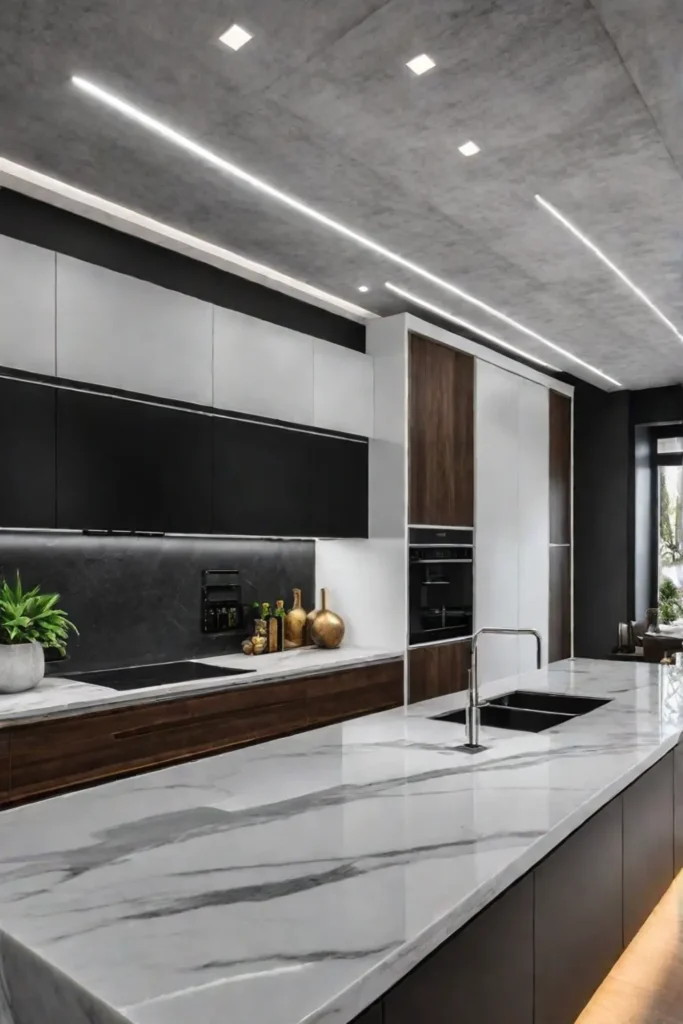
So, if you want to take your kitchen from drab to fab, you’ve come to the right place. In this post, I’ll share ten stunning kitchen lighting ideas that can truly transform your space, from modern pendants to elegant chandeliers. Get ready to be inspired!
Pendant Lights
Pendant lights are one of my go-to choices for kitchen lighting. They’re versatile, functional, and can add a focal point to your cooking and dining areas. Whether you opt for a sleek, modern design or a more traditional, ornate style, pendant lights can make a big impact.
When choosing pendant lights for your kitchen, consider the height of your ceilings and the space size. You’ll want to ensure the pendants are hung at the right height to provide ample task lighting over your island or dining table without feeling overpowering. And don’t be afraid to mix and match different pendant styles or heights to create a layered, visually interesting look.
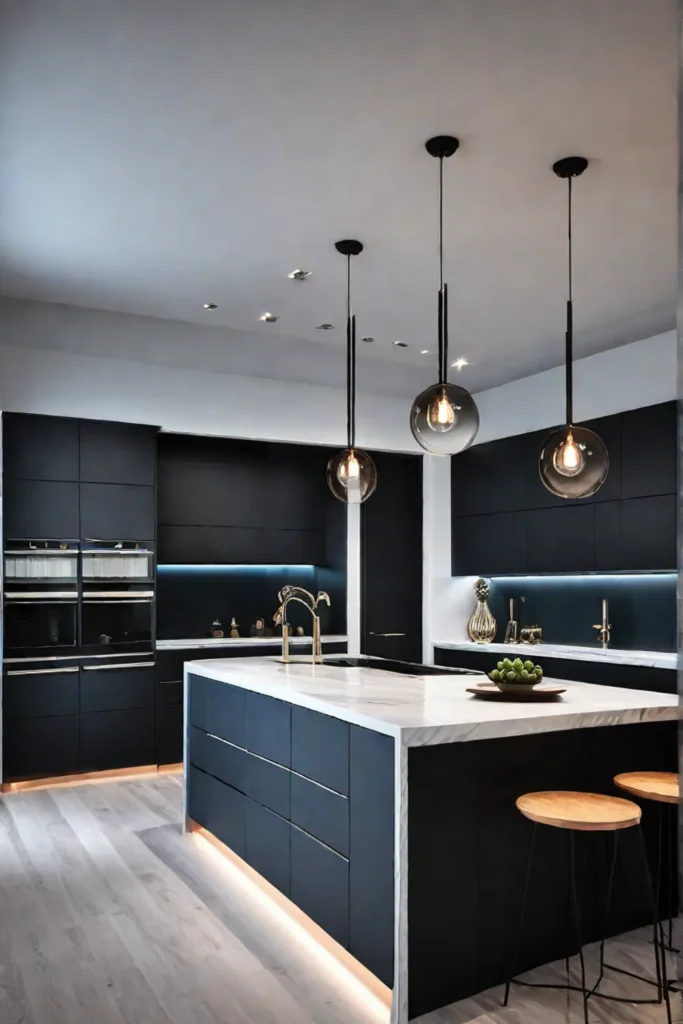
One of the great things about pendant lights is that they can help define different zones in an open-concept kitchen. For example, you might use a cluster of pendants over the island to create a designated cooking and prep area. In contrast, a single, larger pendant over the dining table helps to delineate the eating space.
Recessed Lighting
Recessed lighting might be the way to go if you’re looking for a clean, minimalist look in your kitchen. These flush-mounted fixtures can provide even, glare-free illumination throughout the space, making them a great choice for general ambient lighting.
When it comes to recessed lights, placement and spacing are key. You’ll want to position them strategically to ensure your work surfaces, like countertops and sinks, are well-lit for food preparation and cleaning tasks. The recommended spacing for recessed lights is typically around 36 inches in the center, but this can vary depending on the size of your kitchen and the desired lighting effect.

One of the benefits of recessed lighting is that it can help make a small kitchen feel more open and spacious. The fixtures can create the illusion of a larger, more airy environment by drawing the eye upward. And with dimmable options, you can easily adjust the brightness to suit your mood or the task.
Undercabinet Lighting
Undercabinet lighting is a must-have in any modern kitchen. It provides practical task lighting for your work surfaces and can also add a touch of sleek, high-tech flair to your cooking space.
There are several types of undercabinet lighting, from LED strip lights to puck and bar lights. LED strips are popular because they’re energy-efficient, long-lasting, and available in various color temperatures and brightness levels. On the other hand, Puck lights offer a more focused, downward-facing illumination that’s great for specific task areas.
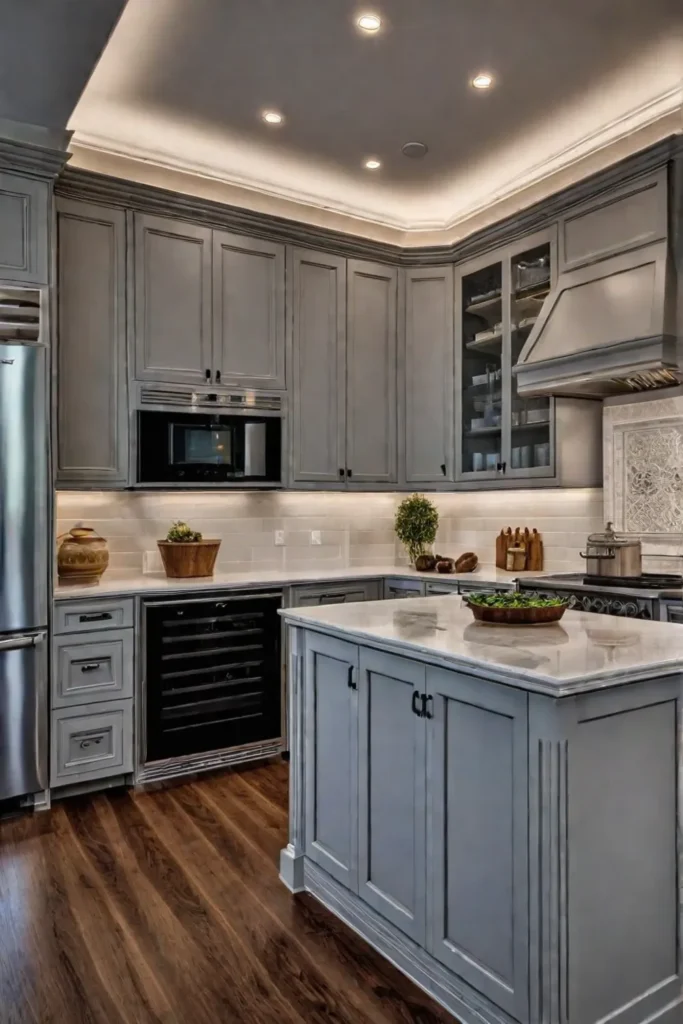
One of the things I love about undercabinet lighting is how it can help make a kitchen feel more high-tech and sophisticated. The clean, integrated look of these fixtures can elevate the space’s overall aesthetic. With options like motion-activated or dimmable lights, you can enjoy both functional and decorative benefits.
Chandeliers and Ceiling Fixtures
If you want to add a touch of elegance and grandeur to your kitchen, consider incorporating a chandelier or other ceiling-mounted fixture. These statement pieces can serve as both a focal point and a source of ambient lighting, transforming the entire feel of the space.
When selecting a chandelier or ceiling fixture, pay close attention to its size and scale. You’ll want to make sure it’s proportional to the size of your kitchen, with a chandelier that’s not too small or too large for the space. Don’t forget to consider the height of your ceilings, as that will also play a role in the type and placement of your fixture.
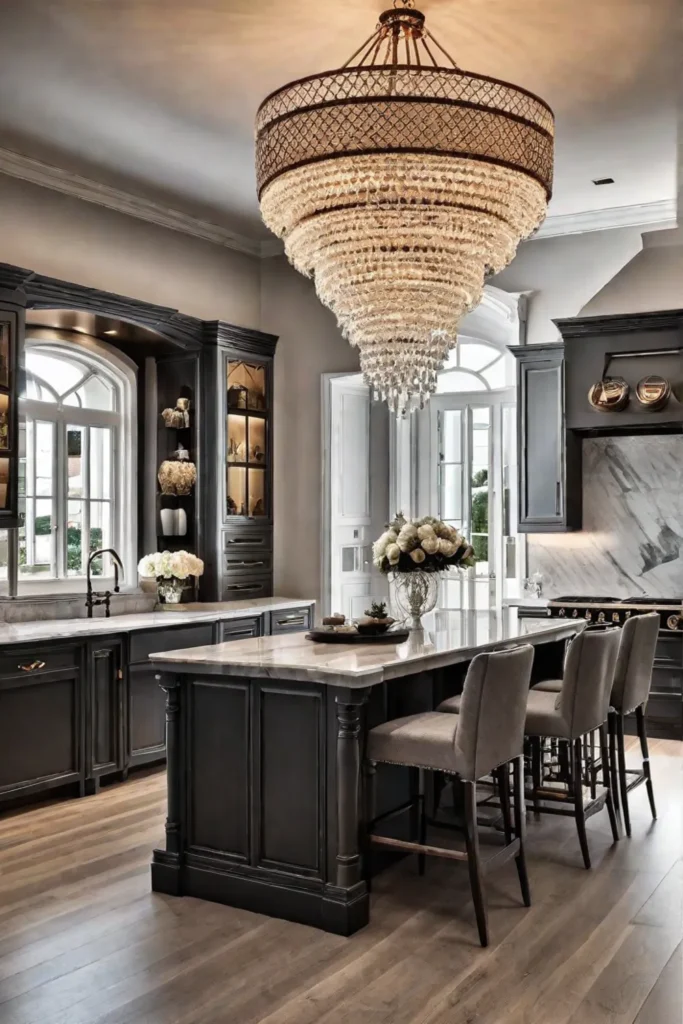
One of the great things about chandeliers and ceiling fixtures is that they can help visually define different zones within an open-concept kitchen. For example, you might hang a chandelier over a kitchen island or dining table to create a designated eating and entertaining area. And with various styles, from traditional to modern and everything in between, you will surely find a fixture that complements your kitchen’s overall design.
Wall Sconces
Wall sconces are another versatile and decorative lighting option for the kitchen. They provide task lighting and ambient illumination and can also add a touch of visual interest to your walls.
When it comes to wall sconces, you’ll find a wide variety of styles, from sleek and modern to more traditional and ornate. And the great thing is they can work in just about any kitchen, whether you have a cozy, country-inspired space or a bold, industrial-chic aesthetic.
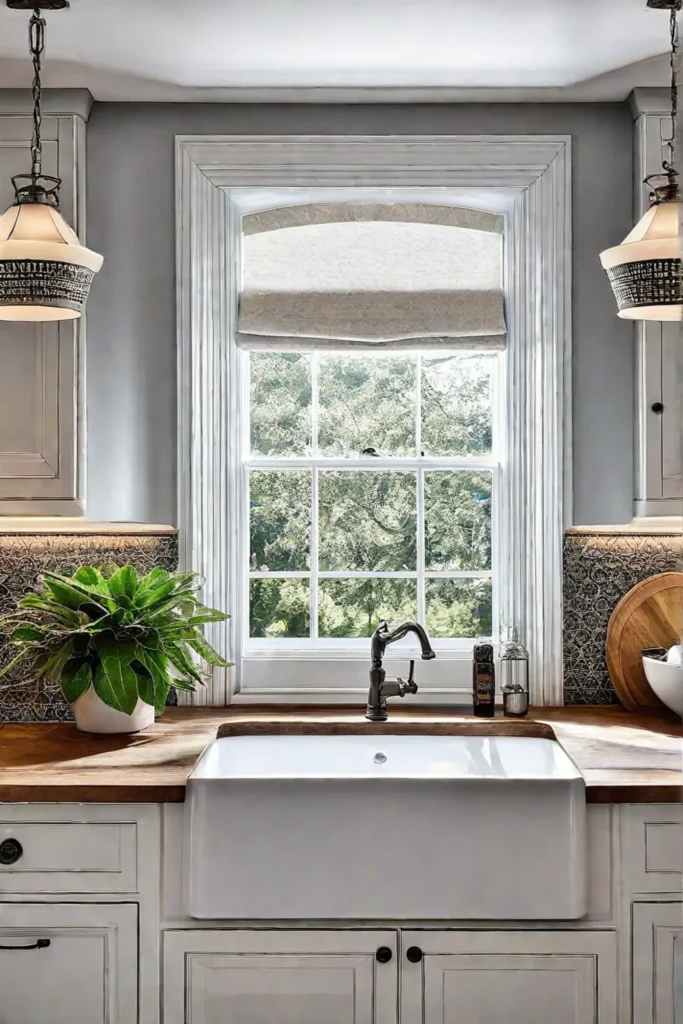
One of the best ways to use wall sconces in the kitchen is to flank a window or doorway. This creates a balanced, symmetrical look that can elevate the overall design. You can also use them to illuminate dark corners or areas with limited overhead lighting, helping to make the space feel more open and inviting.
Track Lighting
If you’re looking for a versatile and customizable lighting solution for your kitchen, track lighting might be the way to go. With its adjustable spotlights and the ability to create unique, layered lighting schemes, track lighting can be a game-changer in the right space.
One key benefit of track lighting is its flexibility. You can easily rearrange the individual spotlights to highlight specific areas, like your kitchen island or work surfaces, or create a more dynamic, visually interesting lighting layout. With LED track lighting options, you can enjoy long-lasting, energy-efficient illumination that won’t break the bank.
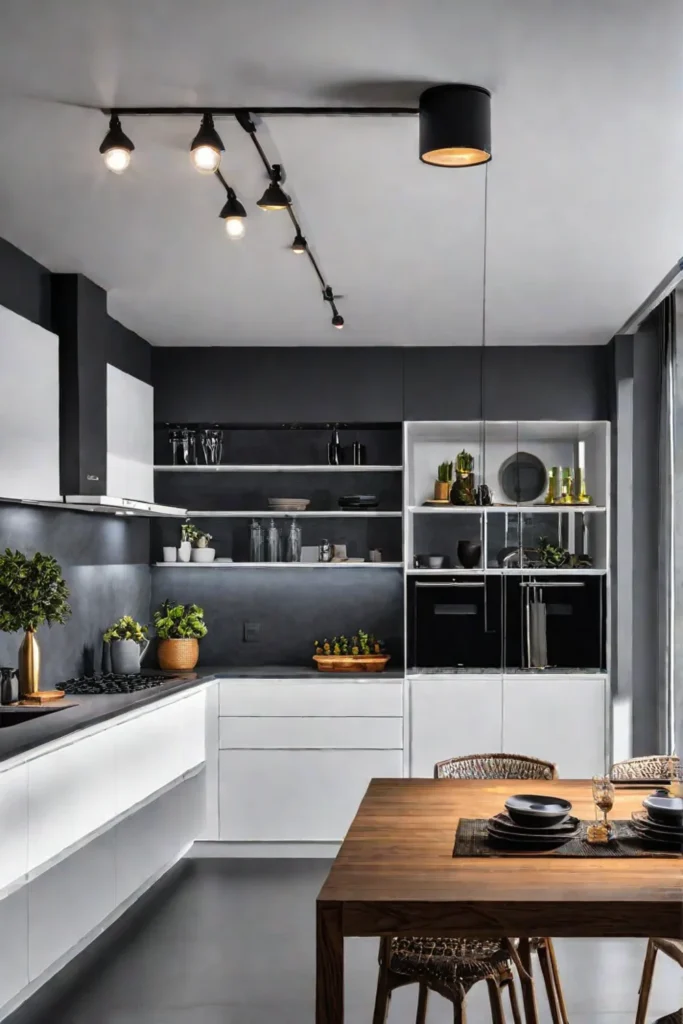
When incorporating track lighting into your kitchen, consider how it can complement other lighting elements, like pendants or recessed fixtures. By layering different types of lighting, you can create a truly stunning and functional space that caters to all your cooking and entertaining needs.
Accent Lighting
Accent lighting is a powerful tool for adding depth, drama, and visual interest to your kitchen. Whether highlighting architectural features, showcasing your favorite decor, or simply creating a warm, inviting ambiance, accent lighting can make all the difference.
There are several ways to incorporate accent lighting into your kitchen design, from cabinet and under-cabinet lighting to toe-kick and pendant lighting. Cabinet lighting, for example, is perfect for showcasing your beautiful glassware or highlighting the interior of your display cabinets. On the other hand, under-cabinet lighting can provide practical task lighting while adding a sleek, modern touch.
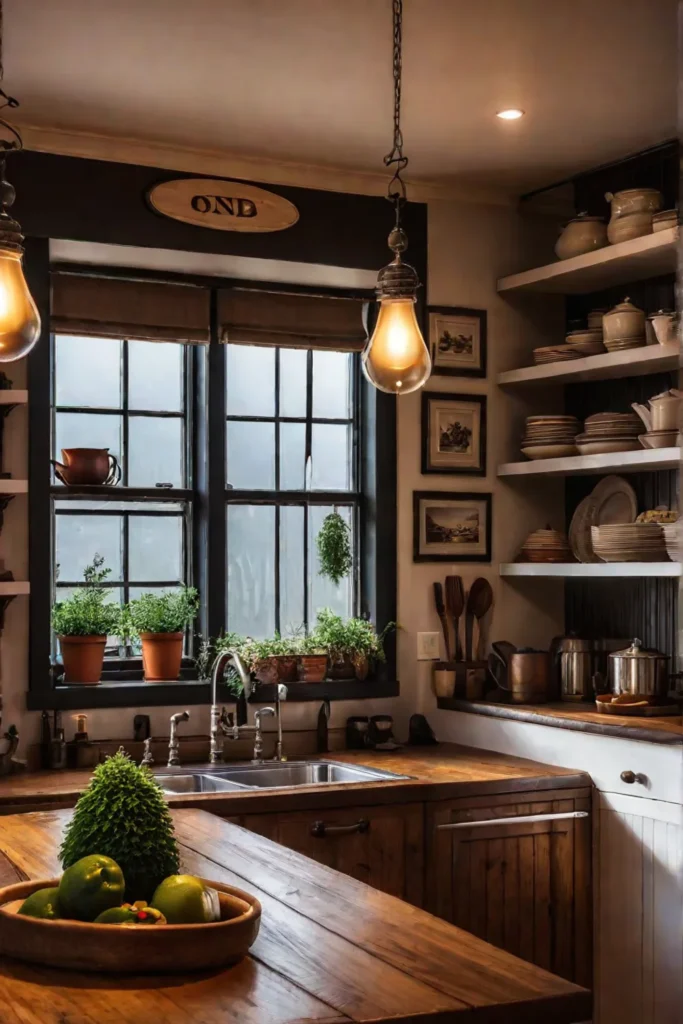
One of the things I love about accent lighting is how it can make a small kitchen feel more spacious and open. By strategically placing lights to draw the eye upward or highlight specific features, you can create the illusion of a larger, more airy environment. And with dimmable options available, you can easily adjust the brightness to set the perfect mood, whether cooking a gourmet meal or hosting a dinner party.
Lighting Controls and Automation
As an eco-conscious blogger, I always look for ways to make my home more energy-efficient and sustainable. I’m a big fan of incorporating smart lighting controls and automation into my kitchen design.
With features like dimmers, timers, and motion sensors, you can easily optimize your kitchen lighting to suit your needs and preferences. Dimmable lights, for example, allow you to adjust the brightness to create the perfect ambiance, whether meal-prepping or entertaining guests. And motion-activated lights can help reduce energy consumption by only turning on when someone enters the space.
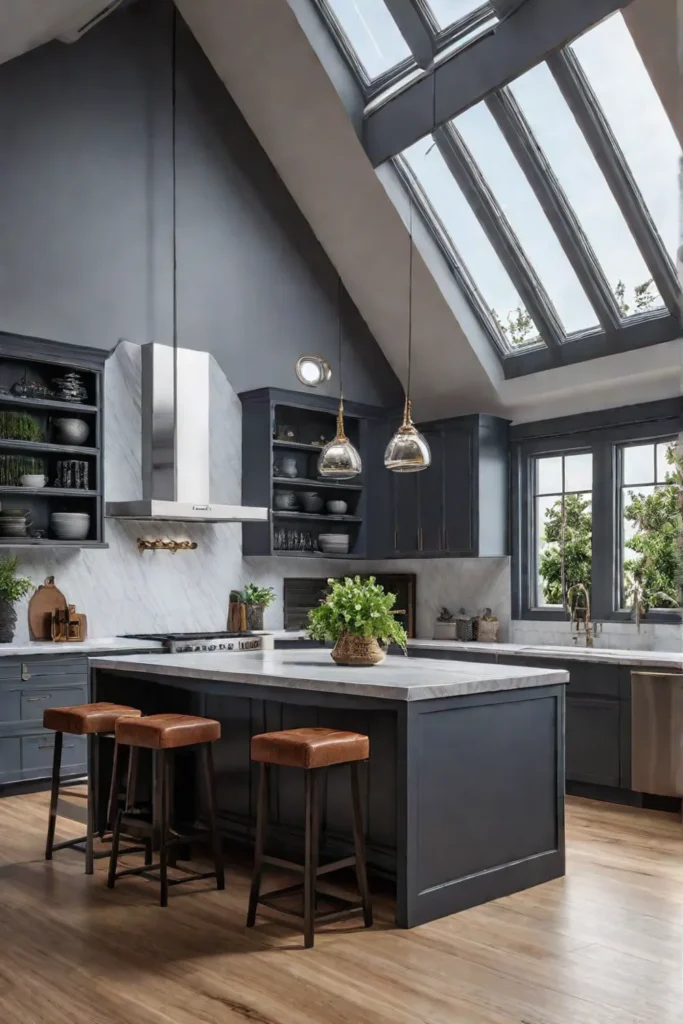
But the real game-changer is integrating smart lighting systems with your home automation setup. Connecting your kitchen lights to voice assistants or a central control app allows you to manage your lighting from anywhere, adjusting the brightness, setting schedules, and even syncing it with your other smart home devices. This level of convenience and customization can truly transform the way you experience your kitchen.
Layering Lighting
One key to creating a truly stunning and functional kitchen lighting scheme is layering different types of lighting. By combining task lighting, ambient lighting, and accent lighting, you can achieve a well-balanced and visually appealing result.
For example, you might start with a foundation of recessed lighting to provide general illumination throughout the space. Then, add pendant lights over your kitchen island or dining table to create a focal point and provide task lighting for those areas. Finally, undercabinet and accent lighting should be incorporated to highlight specific features like backsplash or display shelves.
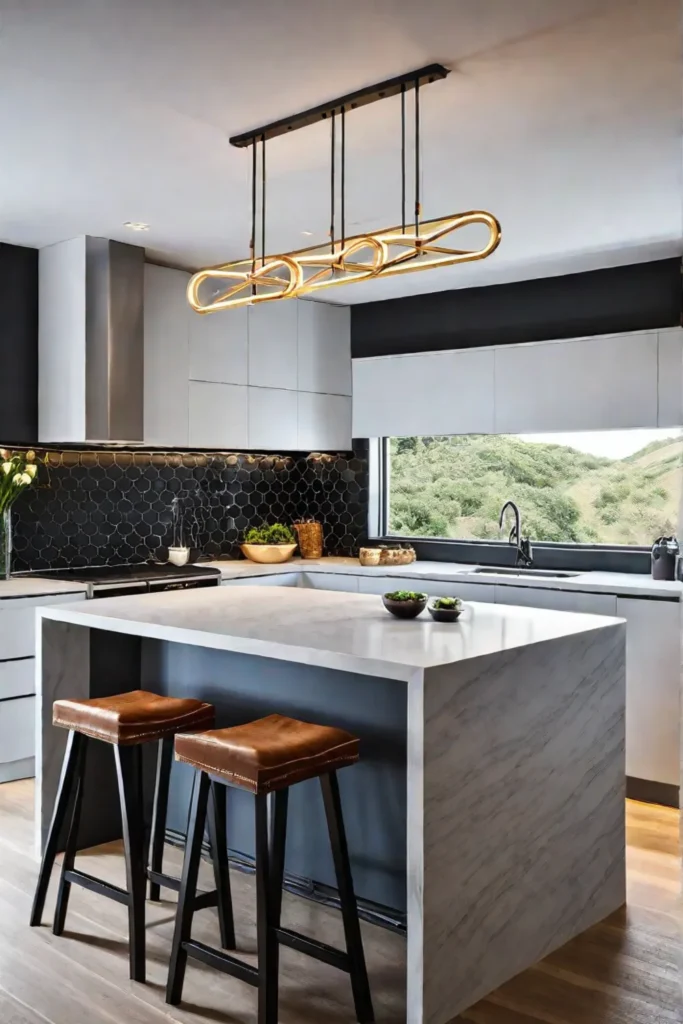
The beauty of a layered lighting approach is that it allows you to adjust the brightness and mood of your kitchen to suit your needs. Dim the pendants for a cozy, intimate vibe during a dinner party, or turn up the undercabinet lights for a well-lit workspace when prepping a big meal. It’s all about finding the right balance and contrast between the different lighting elements.
Lighting Trends and Inspiration
As an eco-conscious lifestyle blogger, I always look for the latest and greatest in sustainable and design-forward kitchen lighting solutions. And let me tell you, the current trends are nothing short of stunning.
One of the big movements I’ve been seeing is a shift towards minimalist, clean-lined lighting fixtures. These sleek, modern designs often feature exposed bulbs or simple, geometric shapes, creating a chic, high-tech look that complements contemporary kitchen styles. On the other end of the spectrum, industrial-inspired lighting, with its raw, unfinished aesthetic, is also gaining popularity, adding an edgy and urban vibe to more rustic or loft-style kitchens.
But if bold and colorful is more your style, you’re in luck. Vibrant, statement-making lighting fixtures are having a moment, with everything from jewel-toned pendants to whimsical, sculptural chandeliers gracing the pages of design magazines. These eye-catching pieces can instantly transform a kitchen into a true work of art.
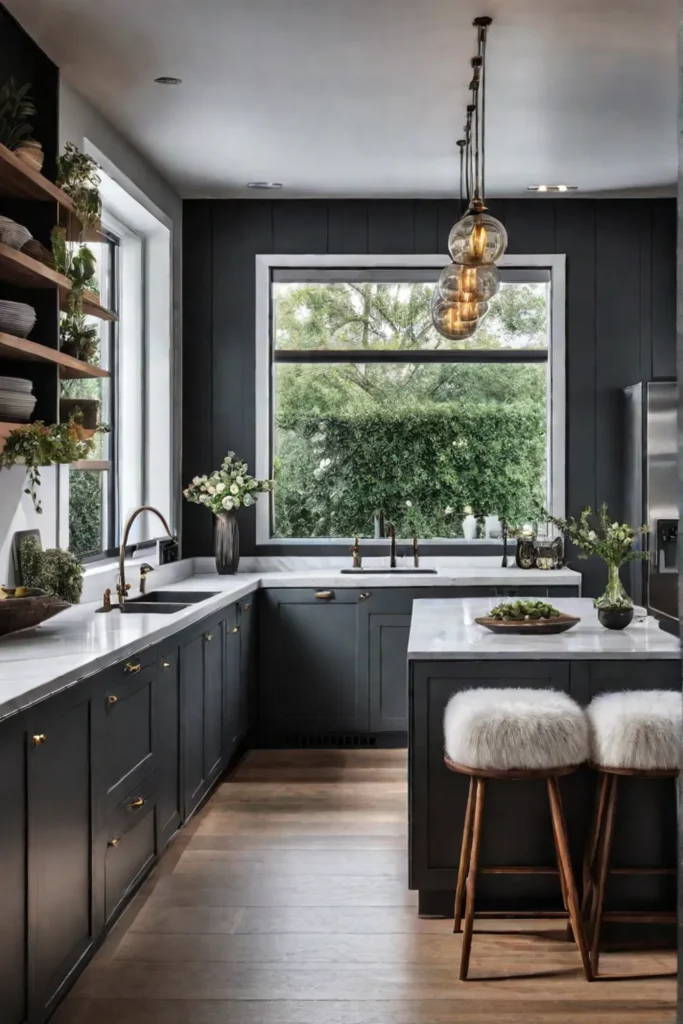
And, of course, as an environmentally-minded writer, I’m always excited to see the rise of sustainable and energy-efficient lighting options, like LED strip lights and smart home automation systems. In my book, these innovative solutions look great and help reduce your carbon footprint and utility bills – a win-win.
Conclusion
Ultimately, the right kitchen lighting can make all the difference in creating a warm, inviting, and highly functional space. Whether you’re drawn to the sleek sophistication of pendant lights, the clean lines of recessed fixtures, or the high-tech appeal of undercabinet lighting, there’s a stunning solution to suit your style and needs.
You can transform your kitchen into a truly remarkable and personalized oasis by layering these different lighting elements and incorporating the latest trends and technologies. So why not get started on your lighting makeover today? With these ten stunning ideas, you’ll be well on your way to creating a kitchen that’s not only beautiful but also a joy to cook and entertain in.
Happy lighting!
